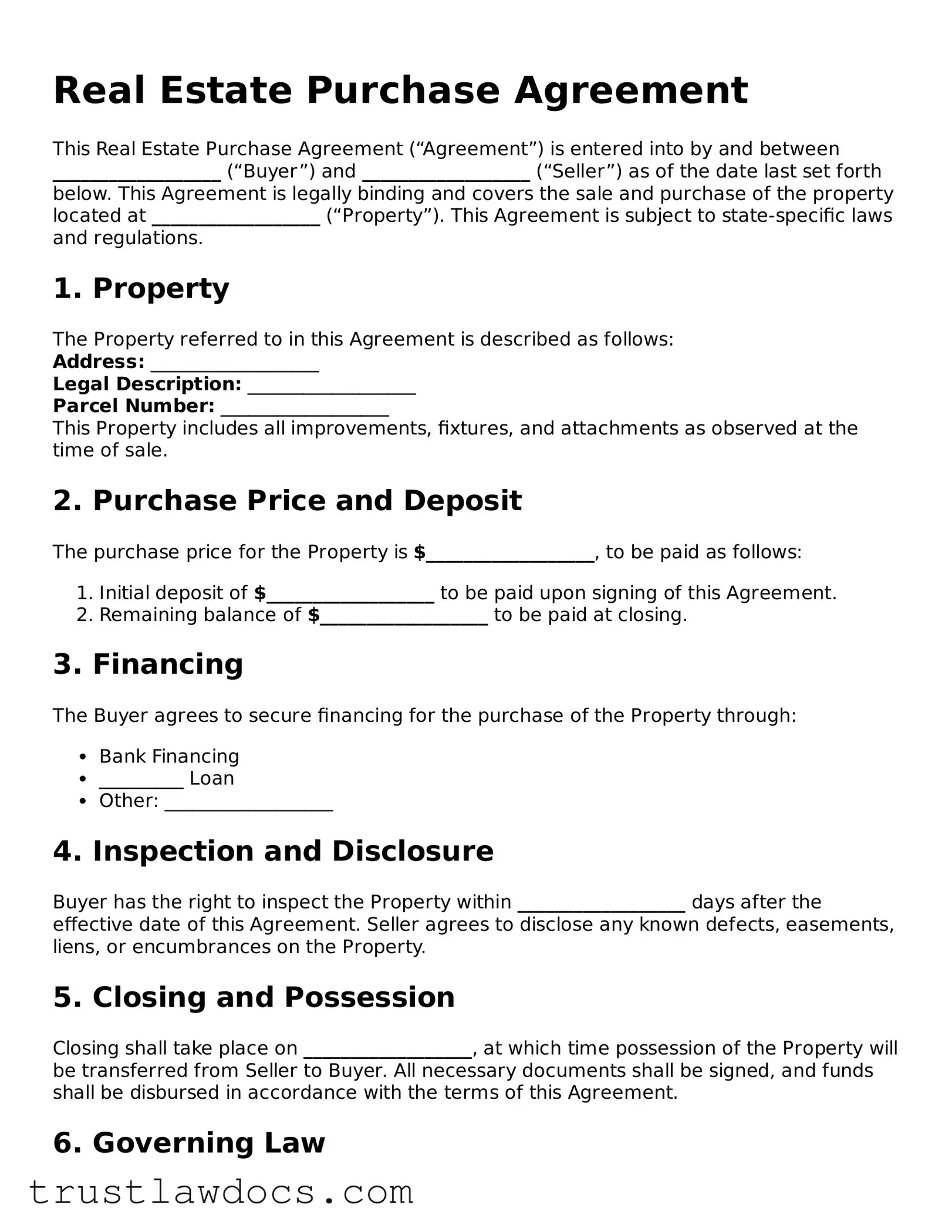What is a Real Estate Purchase Agreement?
A Real Estate Purchase Agreement is a legally binding document between a buyer and seller concerning the sale and purchase of real estate property. It outlines the terms and conditions of the sale, including price, property description, and closing details, ensuring both parties are clear on their obligations.
When should I use a Real Estate Purchase Agreement?
This agreement should be used whenever you are buying or selling real estate. It’s an essential step in the property transaction process that formally captures the agreed-upon terms between both parties, offering legal protection and clarity from the time of agreement through to the closing.
What information needs to be included in this agreement?
Specifics such as the names of the buyer and seller, a detailed description of the property being sold, the purchase price, the earnest money deposit amount, financing details, closing and possession dates, and any contingencies that might affect the sale (like the requirement for a satisfactory home inspection) should be included. Additionally, any included or excluded items, like appliances, should be clearly listed.
Are there standard contingencies found in most agreements?
Yes, common contingencies include the buyer's ability to obtain financing, the results of the home inspection, the sale being subject to the buyer selling their current home, and the requirement for a clear title. These conditions protect both parties – for instance, they ensure the buyer can withdraw without penalty under certain circumstances.
How is the purchase price decided?
The purchase price is typically a matter of negotiation between the buyer and the seller. It’s influenced by various factors including the property's market value, its condition, and current market conditions. The agreed-upon amount is then documented in the Real Estate Purchase Agreement.
What is an earnest money deposit?
An earnest money deposit is a portion of the purchase price that the buyer pays to the seller as a sign of good faith when the agreement is signed. This deposit is usually held in an escrow account and applied towards the purchase price at closing. It assures the seller of the buyer’s commitment and helps protect the seller if the buyer breaches the agreement.
Can either party back out of a Real Estate Purchase Agreement?
Backing out of the agreement can have legal repercussions. However, the agreement may contain contingencies that allow either party to terminate the contract under specific conditions, such as failure to secure financing or unsatisfactory inspection results. Without such contingencies, backing out could result in the forfeit of the earnest money deposit or other penalties.
What happens if there are disputes over the agreement?
If disputes over the agreement arise, the parties should first refer to the terms within the agreement for resolution methods. Mediation or arbitration can be pursued as alternate dispute resolution methods. Litigation is also an option, though it can be time-consuming and expensive.
Is a Real Estate Purchase Agreement legally binding once signed?
Yes, once both the buyer and seller have signed the Real Estate Purchase Agreement, it becomes a legally binding document. Each party is then obligated to fulfill their respective roles as outlined, under the protection and regulation of the agreement’s terms.
